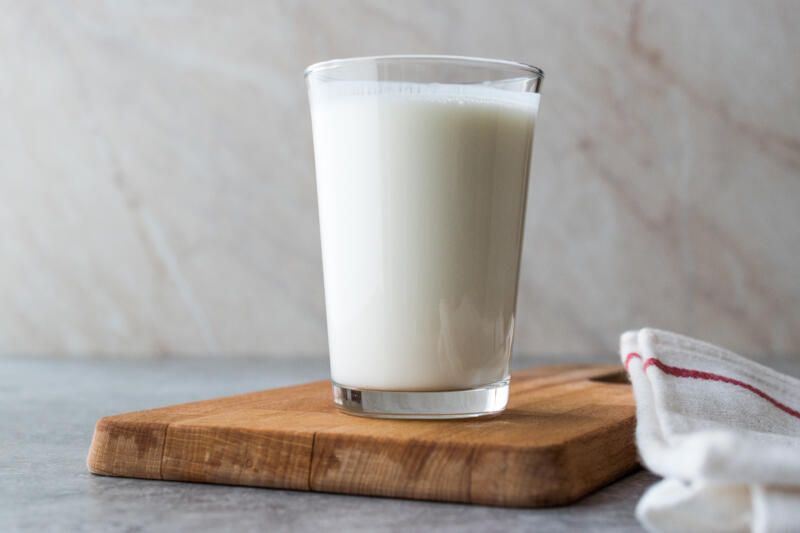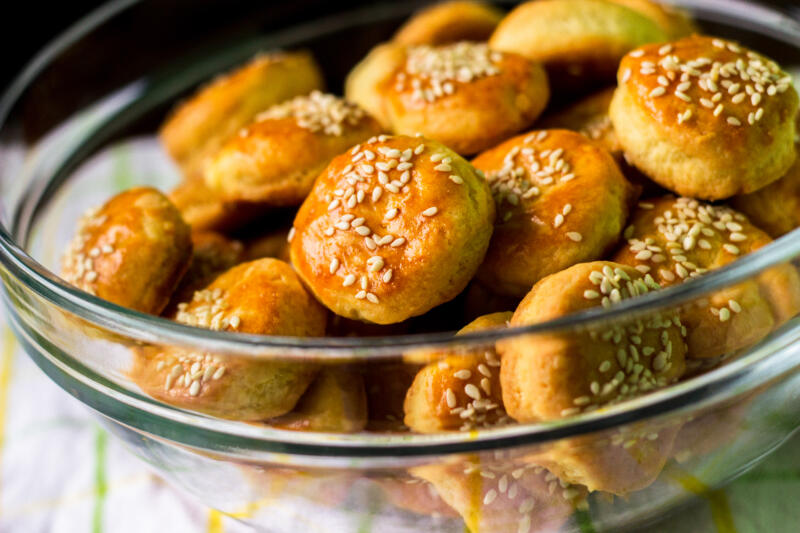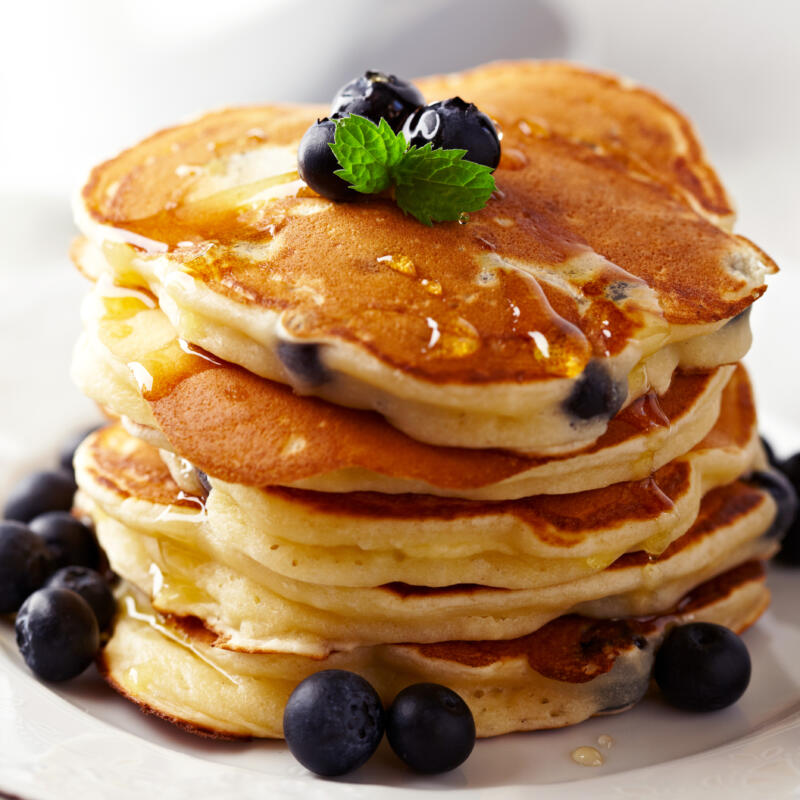Have you ever found yourself in the middle of a baking frenzy, only to realize that the buttermilk you need for your recipe has been sitting in the back of your fridge for a while?
You take a quick sniff, but you’re still unsure. You’re left wondering, “How to know if buttermilk is bad?”

Well, you’re not alone. I’ve been there too, and I’ve learned a few tricks along the way to help determine if that buttermilk is still good to use or if it’s time to toss it out.
Let’s dive into the tell-tale signs of bad buttermilk and how to ensure you’re using the freshest ingredients in your culinary creations.
Highlights
- Trust Your Senses: The first step in determining if buttermilk has gone bad is to check for any off smells, changes in texture, or visible mold. Fresh buttermilk should have a pleasantly sour smell and a thick, creamy texture. Any deviation from this could indicate spoilage.
- Storage Matters: Properly storing buttermilk can significantly extend its shelf life. Keeping it in the back of the fridge, where it’s coldest, can help maintain its freshness. And remember, once opened, buttermilk should ideally be used within two weeks.
- Don’t Waste, Get Creative: If you find yourself with buttermilk nearing its expiration date, don’t rush to throw it away. Buttermilk can be used in a variety of recipes, from tenderizing chicken in marinades to adding depth to salad dressings. It’s also freezer-friendly, so you can save it for later use.
In this article:
Signs that Your Buttermilk Has Gone Bad
When it comes to identifying the signs of bad buttermilk, your senses are your best tools.
- Change in Smell: Fresh buttermilk has a tangy, slightly sour aroma, but when it goes bad, this scent can intensify and become unpleasantly strong and off-putting.
- Taste: A small, cautious taste (without swallowing) can serve as a final check; an off taste is a sign to throw it away.
- Change in Texture: Buttermilk should have a thick and creamy consistency, similar to that of yogurt. If it becomes too thin or watery, or if it develops a chunky or curdled appearance, it’s likely past its prime.
- Color: Fresh buttermilk is typically a creamy white color. If it starts to turn yellow or develops a greyish hue, it’s time to discard it.
- Mold Growth: This is a clear sign that your buttermilk has spoiled. Mold can appear as fuzzy spots of green, blue, or black on the surface of the buttermilk.
If you notice any of these signs, it’s best to err on the side of caution and discard the buttermilk. Consuming spoiled buttermilk can lead to foodborne illness, so it’s not worth the risk.
Taste and Smell
The taste and smell of buttermilk are key indicators of its freshness. Let’s delve deeper into these sensory cues and how they can help you determine if your buttermilk is still good to use or if it’s time to toss it out.
Tangy Flavor and Sour Smell Indicate Spoiled Milk
Buttermilk naturally has a tangy flavor and a slightly buttery smell. However, when it spoils, these characteristics intensify and change. The tangy flavor becomes stronger and more sour, and the smell becomes unpleasantly sour.
These changes occur due to the growth of bacteria in the buttermilk. As the bacteria multiply, they produce lactic acid, which gives spoiled buttermilk its sour taste and smell.
Factors such as improper storage, temperature fluctuations, and exposure to air can accelerate this bacterial growth, leading to a quicker spoilage of the buttermilk.
Therefore, these sensory cues – a stronger tangy flavor and a sour smell – can be used to determine if your buttermilk is no longer safe to consume.
What Happens If You Consume Spoiled Buttermilk?
Consuming spoiled buttermilk can lead to food poisoning, a common illness caused by consuming foods or drinks that have been contaminated with bacteria, viruses, parasites, or toxins.
Symptoms of food poisoning can range from mild to severe and may include nausea, vomiting, abdominal cramps, diarrhea, fever, and dehydration. If you suspect that you’ve consumed spoiled buttermilk and are experiencing these symptoms, it’s important to seek medical attention.
Shelf Life

Understanding the shelf life of buttermilk is crucial to ensuring you’re using a fresh, high-quality product in your baking and cooking endeavors.
Let’s delve into the specifics of how long both unopened and opened buttermilk can last.
How Long Does Unopened Buttermilk Last?
The shelf life of unopened buttermilk can vary, but it typically lasts up to a week past its sell-by date when properly refrigerated.
However, it’s important to note that its quality may start to deteriorate after this point, even if it’s unopened.
The longevity of unopened buttermilk can be impacted by factors like temperature and storage conditions.
For instance, if the buttermilk is stored in a part of the refrigerator that’s subject to frequent temperature fluctuations (like the door), it may not last as long.
How Long Does Opened Buttermilk Last?
Once opened, the degradation process of buttermilk accelerates.
According to the United States Department of Agriculture, the general guideline is that opened buttermilk can last up to two weeks in the refrigerator, though the precise duration can depend on several factors, including the handling and storage conditions of the buttermilk. [1]
After this point, the risk of spoilage and foodborne illness increases. To guarantee optimal quality and flavor, consider consuming it within one week.
If you find yourself with more buttermilk than you can use within this timeframe, freezing is an option to extend its shelf life. However, keep in mind that the quality of the buttermilk may start to deteriorate after 3 months in the freezer.
Factors That Affect the Shelf Life of Buttermilk
The shelf life of buttermilk can be influenced by a variety of factors.
The processing method used can affect the shelf life of buttermilk. For instance, ultra-pasteurized buttermilk tends to last longer than traditionally pasteurized buttermilk due to the higher heat treatment it undergoes, which kills more bacteria.
The carton date is another factor to consider. This date is a quality indicator rather than a safety measure. After this date, the buttermilk may still be safe to consume, but its quality may start to decline.
Storage technique plays a crucial role in preserving the freshness of buttermilk.
It should be stored in its original container, which is designed to keep out light and maintain the quality of the buttermilk. Once opened, it should be tightly sealed to prevent exposure to air and potential contaminants.
It should be kept in a cool, dark place (like the back of the refrigerator) away from light and heat, which can accelerate spoilage.
Buttermilk Refrigeration and Freezing
Buttermilk should be kept in the refrigerator at a recommended temperature below 40°F (4°C).
Unopened buttermilk can last up to two weeks past the sell-by date, while opened buttermilk should ideally be consumed within one week.
The factors affecting the shelf life of buttermilk include the temperature of your refrigerator, how often the refrigerator door is opened, and how the buttermilk is stored.
To extend the shelf life of buttermilk beyond its fridge life, you can freeze it. To freeze buttermilk, pour it into airtight containers, leaving some space for expansion.
Make sure to label the containers with the date, so you know when to use them by.
Frozen buttermilk should ideally be used within three months for the best quality. Remember to thaw frozen buttermilk in the refrigerator and give it a good stir before using.
Difference Between Traditional & Cultured Buttermilk

In the United States and many other countries, most of the buttermilk you find in supermarkets is cultured buttermilk.
It comes to life by introducing bacterial cultures to conventional milk, initiating a fermentation process. The bacteria metabolize the sugars in the milk (lactose) during fermentation, producing lactic acid, which gives buttermilk its characteristic tang.
This method imparts the signature tangy flavor and a notably thicker texture, distinguishing it from regular milk.
However, if you seek traditional buttermilk, you might explore local dairies, small-scale farms, or specialty shops.
Sometimes, small-scale dairy producers or local farmers who make their own butter might sell traditional buttermilk directly to consumers.
For foodies who wish to experience authentic buttermilk taste and cannot find it in stores, making it at home by churning butter from cream is also an option. The remaining liquid after the butter has been formed is your traditional buttermilk.
How to Use Buttermilk Before It Goes Bad

Buttermilk is often used in baking due to its ability to react with baking soda to help baked goods rise. It’s also used in salad dressings, marinades, and can be drunk straight.
From tenderizing chicken for a crispy fried chicken recipe to adding tanginess to a batch of fluffy pancakes, there are plenty of ways to use buttermilk before it goes bad.
One simple recipe idea is buttermilk biscuits. Combine two cups of flour, a tablespoon of baking powder, a teaspoon of sugar, a teaspoon of salt, and a half teaspoon of baking soda.
Cut in a stick of cold butter, then add a cup of buttermilk and stir until just combined. Knead the dough a few times, roll it out, cut out your biscuits, and bake at 450°F for 10-12 minutes.
Another idea is buttermilk-marinated roast chicken. Combine buttermilk, salt, honey, garlic, and your favorite herbs and spices in a bowl. Place a whole chicken in a zip-top bag, pour in the marinade, and refrigerate overnight.
The next day, roast the chicken in the oven at 400°F for about an hour and a half.

Nutritional Value
Buttermilk is not only your pancake’s best buddy or your biscuit’s secret whisperer; it’s also brimming with nutritional goodies that can be a boon to our bodies!
Packed with vital nutrients like calcium and protein, it provides essential support for strong bones and muscular repair.
Notably low in fat, it becomes an intriguing option for those monitoring their dietary fat intake.
The probiotic nature of buttermilk, especially the cultured variety, nurtures our gut health, facilitating smoother digestion and potentially boosting our immune system.
Furthermore, it’s a source of Vitamin B12, crucial for nerve function and the production of DNA.
Integrating buttermilk into your diet thus doesn’t just elevate your culinary endeavors but also substantively contributes to maintaining various aspects of your health, weaving it seamlessly into a balanced dietary routine.
FAQs
Can buttermilk be frozen?
Yes, buttermilk can be frozen to extend its shelf life. It’s best to use frozen buttermilk within three months for the best quality.
Is it safe to use buttermilk after the expiration date?
Buttermilk can often be used for a short period after the expiration date, but it’s important to use your senses to check for signs of spoilage, such as changes in smell, taste, or texture.
Is it okay to use expired buttermilk?
If the buttermilk has been stored properly and shows no signs of spoilage, it may be safe to use. However, when in doubt, it’s best to err on the side of caution and discard it.
Does buttermilk expire in the fridge?
Yes, like all dairy products, buttermilk can spoil over time, even when refrigerated. It’s best to use buttermilk within a week or two of opening.
What is the difference between buttermilk and spoiled milk?
While both have a tangy flavor, buttermilk is a product of controlled fermentation and is safe to consume. Spoiled milk, on the other hand, has gone bad due to bacterial growth and can cause food poisoning if consumed.
Closing Thoughts
I hope this guide has given you the confidence to navigate your way around a carton of buttermilk and to make the most of this versatile ingredient in your kitchen.
Remember, when in doubt, trust your senses. They are often the best tools you have to ensure the freshness and safety of your food.
Now, it’s your turn to put these tips into practice. And if you have any questions or comments, or if you have your own tips to share, I’d love to hear from you.